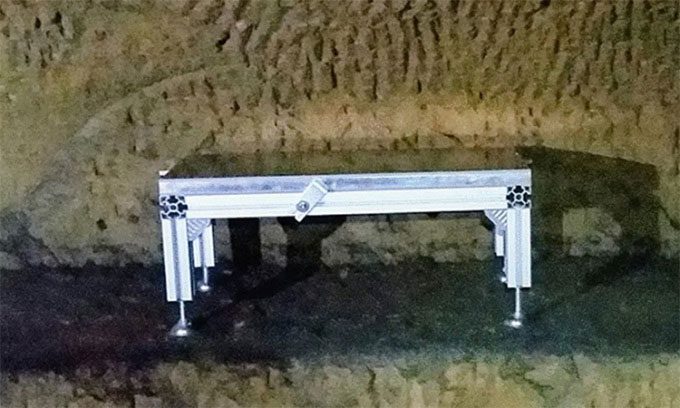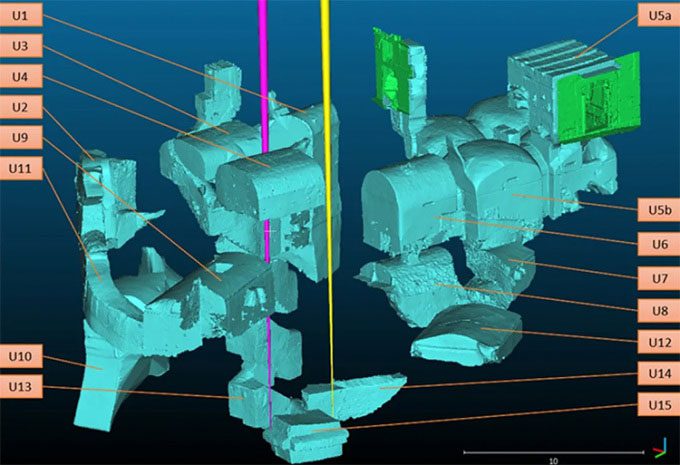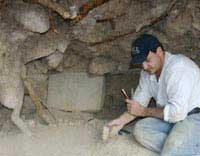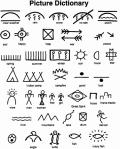Italian and Japanese researchers have discovered the burial chamber of an ancient cemetery hidden beneath the city of Naples using muon tomography.
In the technique of muon tomography, scientists utilize cosmic rays to map inaccessible areas. Muons are negatively charged particles produced when cosmic rays collide with atoms in the upper atmosphere of Earth. Muons reach the Earth’s surface at a rate of about 10,000 particles per square meter per minute. Muon tomography enables the construction of 3D models from the data collected as these particles pass through obstacles of varying densities, such as walls or floors.

Muon detectors placed in an ancient vault. (Photo: Valeri Tioukov).
In a recent study published in Scientific Reports, the team used this technique to map the remains of the ancient Greek city of Neapolis beneath Naples, as reported by IFL Science on April 26. Excavations have been largely inaccessible due to the high population density in the area.
“The remains of the ancient city of Neapolis, with its buildings, streets, aqueducts, and cemeteries constructed by the Greeks in the latter half of the first millennium BC, are currently located approximately 10 meters below the road surface of Naples,” the research team stated.
“The first challenge was to design a compact muon detector with high angular resolution that could be transported in narrow spaces and operated without a power grid. The detector was developed based on technologies we used in physics experiments at the European Organization for Nuclear Research (CERN) and the National Institute for Nuclear Physics (INFN) Gran Sasso Laboratory,” said Giovanni De Lellis, an expert from Federico II University and the National Institute for Nuclear Physics (INFN) in Naples.

Diagram created by the research team. (Photo: Valeri Tioukov)
The muon detectors were placed in an ancient vault 18 meters below the road surface of Naples. After several months, they detected approximately 10 million muons. This allowed the research team to create a three-dimensional reconstruction.
“Based on the number of muons reaching the detectors from different directions, we could estimate the density of the material they passed through. We found data that could only be explained by the presence of a new burial chamber,” said Valeri Tioukov, the lead author of the study and a specialist at INFN.
Many similar burial chambers in the area contain exquisite frescoes and sculptures that wealthy families from the Hellenistic period built for their deceased. However, scientists have yet to access the newly discovered chamber and have only studied it using cosmic rays.





















































